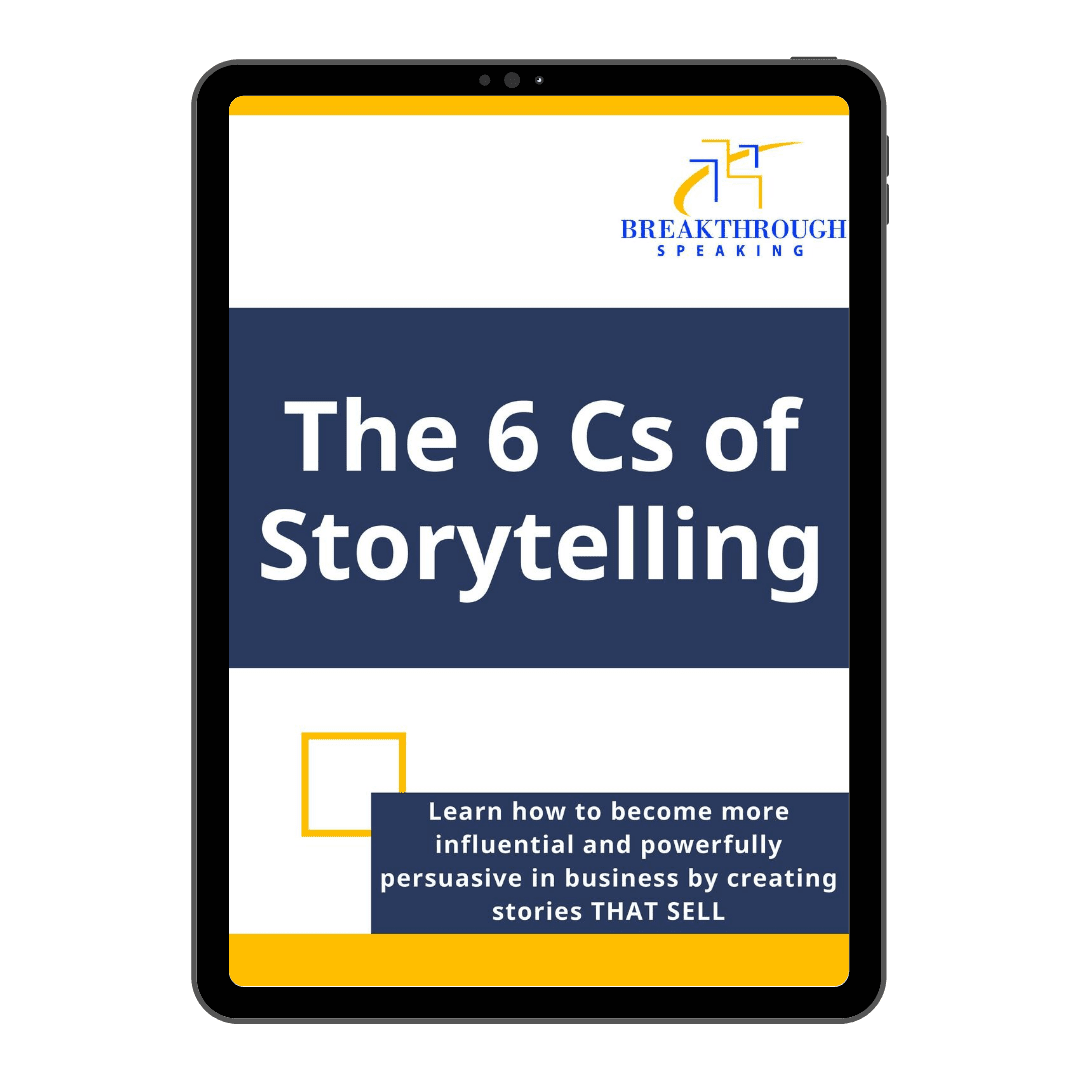
As human beings, we are hard wired to be storytellers. We also love hearing stories too. It gives us an emotional connection between the characters in the story and the audience.
Studies have shown that when people are shown statistics and then a story, only 5% remembered the stats, but 63% remembered the story.
Sometimes, however, we forget to bring the use of storytelling into the business arena. Maybe we feel that they can’t be factual enough. Yet the truth is, your audience aren’t looking for another sales pitch, they want to be captivated by a story that changes their thinking and causes them to take action.
Here are my four secrets that will help you tell captivating stories that persuade your audience.
Focus on the struggle more than the success
Have you noticed that whenever you hear a great business leader speak, they rarely talk about their success? That would be too immodest. They focus their story on the effort, or struggle, more than the success itself.
The reason is because effort is more relatable than success. We all go through some sort of struggle to achieve what we want, to varying degrees, and this is what makes the characters and storyline far more interesting.
You can use your story’s hero to communicate the struggle, and introduce a mentor character to help them overcome it.
Know who you are talking to
You need to know your audience if you want your message to resonate with them. It’s no good talking about something that’s not going or be relevant to the challenges your audience are currently facing.
Too many speakers prepare material with their own perspective in mind, without walking in their audience’s shoes and understanding their needs. When you create a story that resonates with the audience, you’re creating a subtext which is “I get you. I understand your world.”
This instantly gets your audience on side and encourages them to listen and stay engaged in what you have to say.
Create an obstacle
In storytelling, we often call this the “conflict.” It’s part of the hero’s journey and is the cause of what’s stopping them from achieving his or her goal. It has to be something your audience can deeply connect to, and that has relevance and value to them.
The conflict, or obstacle should be resolved in the story by what you have to offer, whether it be a physical product or service.
Add a twist
The best stories always have an element of surprise. It could be a good surprise or a bad one, whatever you choose, make it unexpected.
- Your story could be about a famous person, but only revealing their identify at the end.
- Tell a story when things were going so well (after a struggle) but then take a turn for the worse.
- Give an unlikely connection between two people or two events that the audience don’t expect.
You can incorporate humor and dialogue to help you deliver the element of surprise, as this
helps to keep your audience’s interest which can make your story unforgettable!
There are so many elements to telling a great story and I’ve created a FREE guide, The 6C’s of Strategic Storytelling® that you can download and apply straight away to your next business presentation.
>> DOWNLOAD NOW <<

Get Your Free Guide Now
Sign up below to get your FREE Guide: The 6C’s of Strategic Storytelling™
Become more authentic, meaningful and powerful by communicating your messages using storytelling


